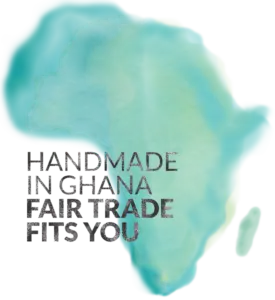BEADS FROM GHANA | BEAD MAKING TOOLS | BEAD PRODUCTION

Ghana is well known for their constant production of beads. Global Mamas hand crafts many of their jewelry from beads made in Odumase-Krobo and Cape Coast. Each type of bead has its own process in order to create the effect the bead makers want. Here are 4 types of beads and the steps they go through in order to create each of them:
Making the Clear/Translucent Beads
- Glass is broken into small pieces by using a granite stone.
- The glass pieces are then sieved in order to remove any remaining glass powder from the pieces.
- Pieces are then scooped and poured over the moulds, filling the holes.
- The kiln is heated at a high temperature.
- Using a long, metal spatula, the molds are placed into the kiln.
- The moulds are then left in the kiln for 30-45 minutes for the glass to melt into molten mass.
- After firing, the moulds are removed one at a time from the kiln.
- Two small metal spindles are used to hold down the mould.
- Another metal spindle is used to pierce the center of the bead.
- The bead is then moved around in the mould to shape the bottom of the bead.
- After all the beads have been shaped, they are left for an hour to cool.
- Sand and water are added onto a sandstone with the beads.
- They are then rubbed until the beads are polished to a smooth finish.
- The sand is washed off the beads and dried.

Making the Powdered Beads
- Glass bottles are broken into smaller pieces by hitting them against a granite stone and then transferred into a mortar where they will be pounded into a fine powder by a pestle.
- Ceramic dye is then added to the glass powder for coloring and then transferred into the moulds.
- A piece of cassava leaf stalk is inserted into each hole of the mould and the surface is smoothed out with a spatula.
- Colored powdered is layered in the moulds to achieve different designs and then fired in the kiln at a low temperature for 5-10 minutes.
- At the end of the firing, cassava leaf stalks will be burnt away, leaving a hole in the center of the bead which will be used for shaping.
- Using two metal spindles, one holds down the mould and the other is inserted in the bead hole to shape the ends of the hot beads.
- The beads are left to cool and then polished.

Making the Painted Glass Beads
- The beginning process is the same as that of the powder and clear glass beads.
- Once the beads have been made and let to cool down they are ready to be glazed and painted.
- A mixture of plain glass powder and ceramic dye are mixed together to create a glaze.
- This glaze/paste allows the bead maker to make designs using the colored paste they’ve created.
- A small pin or needle is then used to draw designs on each bead.
- After the designs have been painted on they are left to dry for approx. 15 minutes.
- Certain moulds that have been coated with kaolin (white clay) are used to hold the designed beads.
- The moulds are placed in the kiln at a low temperature and left until the design is able to melt and stick effectively to the bead.
- The moulds are taken out of the kiln, left to cool for an hour, then the bead maker removes the painted beads and polishes them to a smooth finish.

Making the Seed Beads
- First, glass is broken into smaller pieces until they produce a distinct, glass powder.
- The main difference in making the seed beads is the size of the moulds being used. The moulds used for seed beads have very small depressions. Much smaller than the rest of the moulds. This allows the beads to come out in a nice, tiny shape.
- Glass powder is poured into the tiny holes of the mould and inserted into the kiln.
- After about 45 minutes, the powder is melted into the shape of the seed bead.
- Each bead is then shaped by using a metal spindle to create a hole in the center of the bead, allowing the bead maker to move the bead around to even the shape all around.
- The beads cool down and then are polished.




